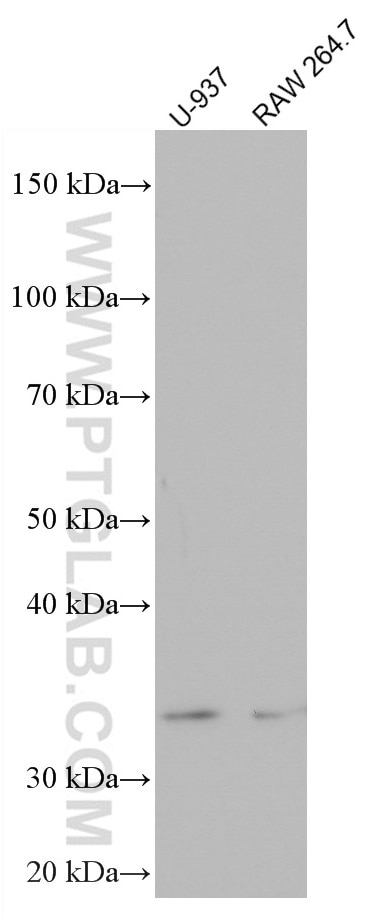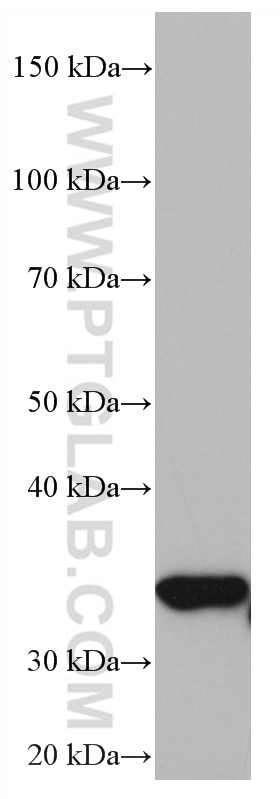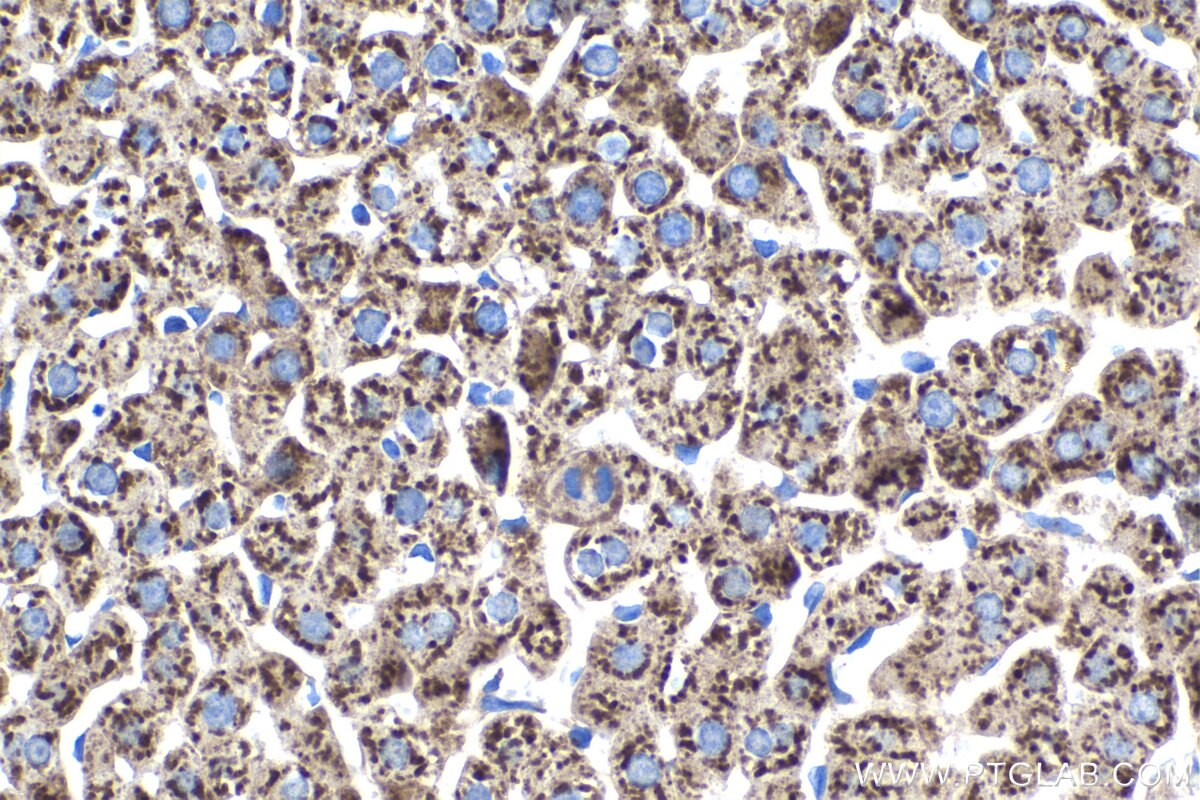Validation Data Gallery
Tested Applications
Recommended dilution
| Application | Dilution |
|---|---|
| It is recommended that this reagent should be titrated in each testing system to obtain optimal results. | |
Product Information
66938-1-PBS targets ZFP36 in WB, IHC, Indirect ELISA applications and shows reactivity with human, mouse, pig samples.
| Tested Reactivity | human, mouse, pig |
| Host / Isotype | Mouse / IgG2a |
| Class | Monoclonal |
| Type | Antibody |
| Immunogen | ZFP36 fusion protein Ag28473 相同性解析による交差性が予測される生物種 |
| Full Name | zinc finger protein 36, C3H type, homolog (mouse) |
| Calculated molecular weight | 326 aa, 34 kDa |
| Observed molecular weight | 34 kDa |
| GenBank accession number | BC009693 |
| Gene Symbol | ZFP36 |
| Gene ID (NCBI) | 7538 |
| RRID | AB_2882262 |
| Conjugate | Unconjugated |
| Form | Liquid |
| Purification Method | Protein A purification |
| UNIPROT ID | P26651 |
| Storage Buffer | PBS only , pH 7.3 |
| Storage Conditions | Store at -80°C. |
Background Information
The expression of many cytokines is regulated post-transcriptionally by factors that modulate mRNA transport, translation, and stability. Much of this regulation occurs by the binding and stabilizing, or destabilizing, of cytokine mRNAs by proteins that recognize adenosine and uridine-rich elements (AREs) in untranslated regions of target transcripts. Zfp36 is a mRNA-binding protein involved in post-transcriptional regulation of AU-rich element (ARE)-containing mRNAs. It was demonstrated to physically interact with the p65 subunit of nuclear factor-κB leading to decreased nuclear import and diminished transcriptional activation mediated by nuclear factor-κB. It acted by specifically binding ARE-containing mRNAs and promoting their degradation, and has a crucial role in the post-transcriptional regulation of tumor necrosis factor (TNF).







